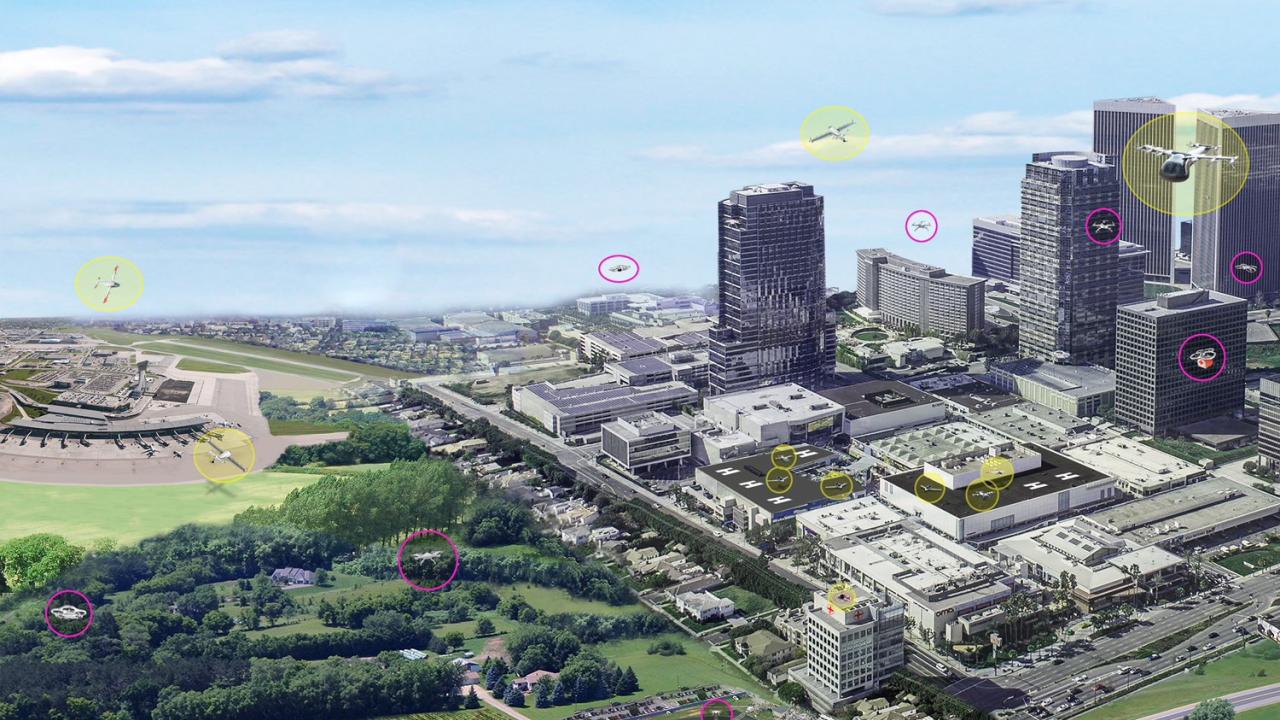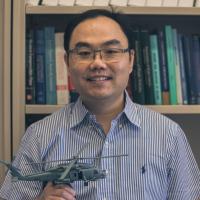
Simulating the Impact of Air Taxis in California
With a new grant from the California Department of Transportation (Caltrans), Mechanical and Aerospace Engineering Associate Professor Seongkyu Lee and his collaborators at UC Berkeley and UC Merced will develop software that will help pave the way for air taxis, also known as advanced air mobility (AAM), to fly in California. AAM promises a new method of transportation through small electric aircraft that can fly passengers and cargo over short distances.

While potentially revolutionary, air taxis will be subject to a regulated flight path known as an airspace corridor. In this joint project, the team will develop software tools to simulate AAM airspace corridors over a selected geographical region to assess safety, equity and environmental impacts on the airspace, transportation corridors and surrounding community. Their tools will help state and local agencies make decisions about how to integrate AAM along existing transportation corridors.
“This will give important guidelines and best practices for developing and approving the airspace corridors for air taxis in California,” he said. “The state government will make the final decision, but we are going to help them to make a better decision with the computational tool.”
Air taxis will be electric, but they can still pollute through noise. Anyone who’s been around a helicopter or a drone knows how loud they can be, and air taxis will face that same risk. It’s therefore important for policymakers to understand how UAM noise will propagate across the community before making decisions.
Lee’s team will generate a “noise map” from the software that shows the noise impact on a community and how it blends into existing noise. Doing this means understanding the impacts of various aircraft noise sources, flight trajectories, how sound propagates in different weather conditions, and having multiple UAM vehicles flying at once.
To do this, the team will use their in-house noise prediction tool UCD-QuietFly combined with external noise simulation software from NASA, the FAA and the Department of Transportation to understand and predict the noise impact during aircraft take-off, flyover and landing. The group has previously focused on the source of noise from the aircraft, so this project is a new, but essential direction.
“I’m very excited about this project because it certainly will expand our lab capability to more practical research,” said Lee. “This is a first step into this research area, but I think this is the right time, as people want to know more about real impacts of these new aircraft on our community.”
He thinks the simulator can also go hand-in-hand with the lab’s aeroacoustics work.
“When we develop new noise mitigation technologies, we can assess the global and meaningful impact of the noise reduction technologies on the community level,” he said.
Throughout the process, Lee and his collaborators at UC Berkeley and UC Merced will maintain close contact with stakeholders to collect feedback and design tools that are both accurate and useful to California policymakers as they make decisions. Together they can facilitate a new era in transportation with this tool.
“If we can combine all of that aircraft data, design network and flow algorithms and develop a new simulator, we can accurately assess the environmental impact of this new transportation system,” he said.
